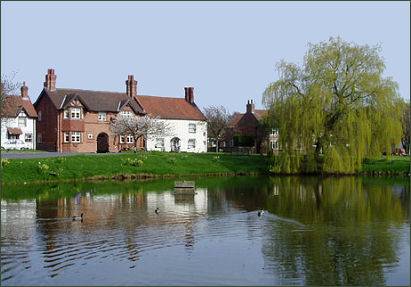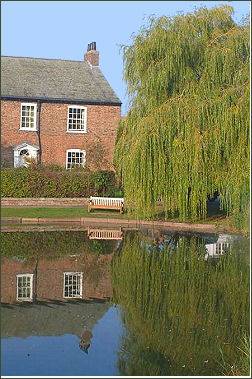Askham Richard
OS grid reference:- SE 536 480
 The pretty and tranquil village of Askham Richard, a conservation area since 1975, is a quintessential English village. It is situated six and a half miles to the south-west of York.
The pretty and tranquil village of Askham Richard, a conservation area since 1975, is a quintessential English village. It is situated six and a half miles to the south-west of York.
An ancient settlement, the village is referred to in the Domesday Survey of 1086, which mentions that at the time that the small village composed of 'seven households '.
 The "Richard" suffix is said to derive from Richard, 1st Earl of Cornwall, who was a son of King John, the younger brother of King Henry III, and was also elected as King of the Romans..
The "Richard" suffix is said to derive from Richard, 1st Earl of Cornwall, who was a son of King John, the younger brother of King Henry III, and was also elected as King of the Romans..
The villages of Askham Richard and nearby Askham Bryan once formed one manor in the time of the Saxon king, Edward the Confessor and belonged to Edwin, Earl of Mercia (died 1071). Earl Edwin's lands were confiscated by William the Conqueror after he attempted to raise a rebellion against Norman rule in Mercia.
The village was then granted to the Norman nobleman Roger de Mowbray who then passed the Manor to his friend, William de Tykhill, a former Warden of Foss Bridge. The estate was once also owned by architect John Carr, who designed Buxton Crescent, Harewood Hall and also York Racecourse grandstand.
The village comprises of one main street, where the picturesque village green and its duck pond are situated. The village pub, the characterful Rose and Crown overlooks the pond and serves food and provides a focal point for village life. It is also a popular staging point for walkers due to the numerous footpaths around the village.
The Grade II listed village church is dedicated to St Mary and was partly rebuilt in 1887 but still retains its Norman doorway and the doorway of the vestry is of the same twelfth century date.
The building consists of a single oblong comprising a nave and chancel. It has a bell turret on the west gable rather than a tower. A Roman sarcophagus rests opposite the church porch, which measures seven foot long, two wide and one foot nine inches in depth. It is of similar character to many found outside the city walls of York and Tadcaster. Inside the church is a stone which is thought to be the base of the village cross. It is thought to date to the pre-conquest era. The cricketer Rev. Archibald Hugh Conway Fargus was the vicar there in 1913. A church has occupied the site since 1086.
